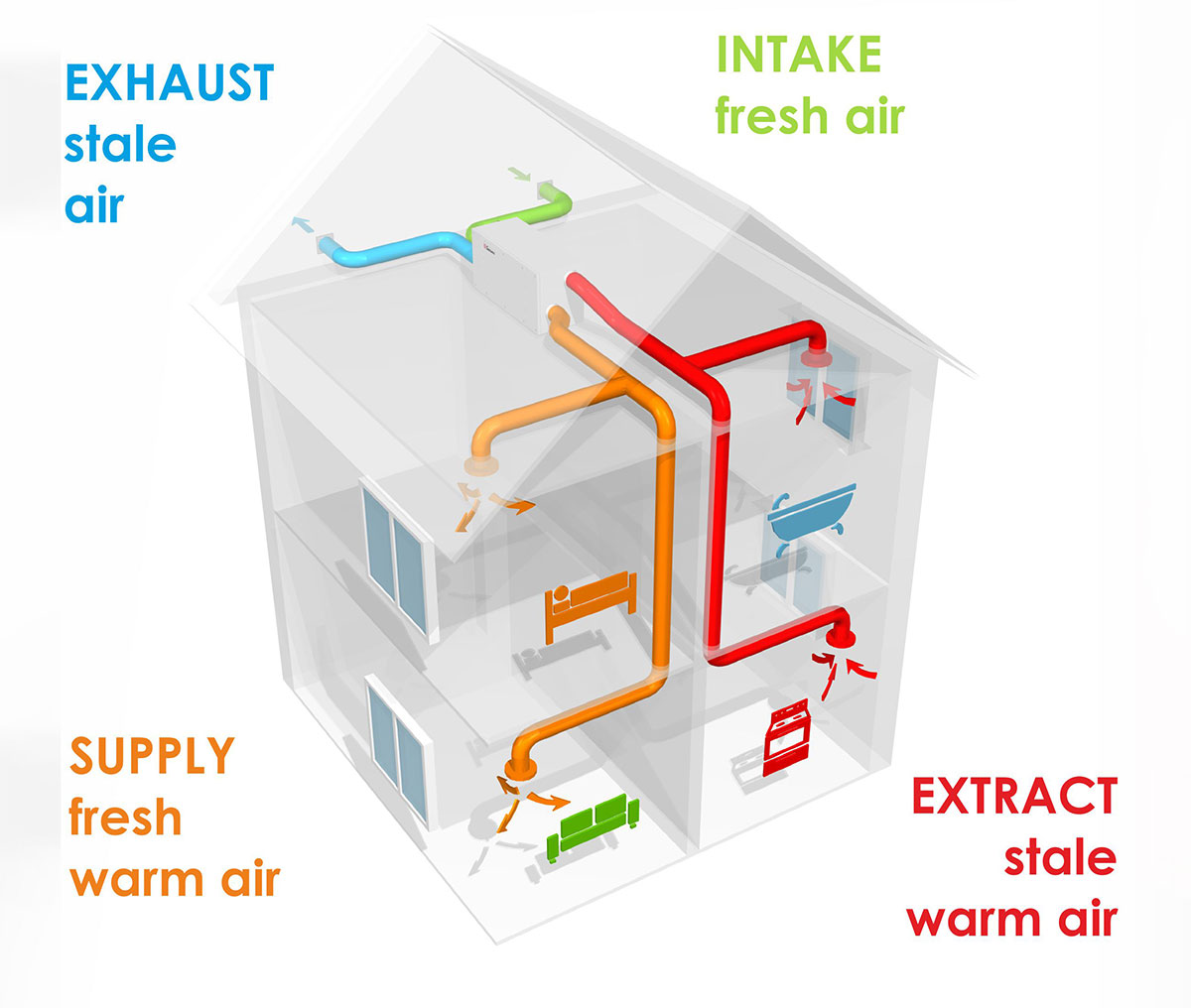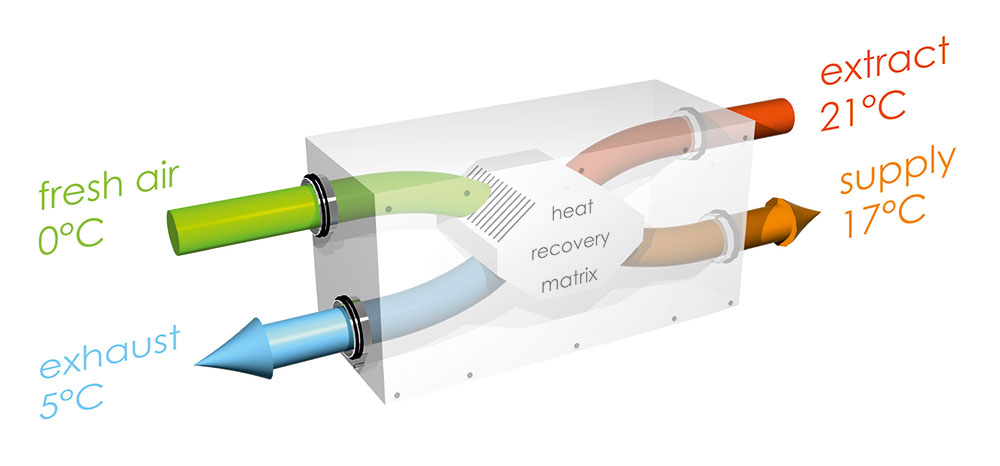Mechanical Ventilation with Heat Recovery System.
Guide to effectively ventilating your airtight & well-insulated newbuild SIPS home.
Building with Structural Insulated Panels (SIPS) means you can wave goodbye to conventional heating systems and dramatically decrease your homes energy waste.
SIPS are highly insulated, and exceptionally airtight. In return have extremely low U-values, minimalizing energy loss. An airtight structure will ensure that you are retaining a comfortable temperature, but it also means that ventilation can be restricted, and could reduce the air quality.
A solution for this, would be to install an MVHR system like those offered by Total Home Environment. An MVHR unit extracts stale air, condensation and pollutants from each room and introduces a fresh, filtered air supply. During the extraction process, the MVHR heat exchange unit removes heat from the outgoing stream and through a network of ducting and a heat exchange unit, recycles it by channeling it back into the incoming airflow to retain a constant air temperature and a healthy supply of fresh air throughout the house.

Up to 95% of the heat from the outgoing air is recovered via a heat exchanger and transferred to the fresh incoming air. This means less electricity, gas or oil is needed to heat your home. In summer, the heat exchanger within the unit can be bypassed, to enjoy cooler-feeling air overnight, where the humidity has been reduced. It has so many benefits over other forms of ventilation like extractor fans and trickle vents, Passive Stack, Positive Input or Mechanical extract ventilation.

The pairing of the Kingspan TEK® SIPs system with its built-in insulation, and a MVHR system is all you require to efficiently heat your home. Some clients may add wood burners, but they aren’t needed, more of a personal preference or visual, than a necessity.
We recommend discussing options for an MVHR system with your architect as soon as you engage with them. This will allow them to consider this when planning the space and to incorporate this alongside any other technologies. This should be done prior to submission and approval of building regulation drawings.
Then as soon as you appoint your SIPs provider, it’s important that you talk to them about your MVHR or any other eco-technologies, so this is factored into your SIPs designs. It’s essential that MVHR duct location is identified at the beginning of the process to allow for correct alignment of floor joists and any other technical complexities are identified early on. You can even take it to a step further with Heat Pump Ventilation. The HPV Series system has a heat recovery ventilation matrix with an integral heat pump providing efficient, responsive heating, heat recovery ventilation, cooling and hot water all in one energy efficient Passivhaus certified system. You can find out more about how heat pump ventilation works and the HPV Series system here. For a recent case study of the HPV system see here.
Total Home Environment is an MVHR specialist, they can guide you through the best solution and can provide accurate technical specifications. It means a lot of decision making early on but once your SIPs provider has all the information to hand, they can carry out essential value engineering and precise fabrication. This will also save time, hassle, and additional costs at the back end of your project.
Adding an MVHR system can also aid your Passivhaus accreditation if you hope to achieve Passivhaus standards. Eco-efficient construction methods like structural insulated panels that include an MVHR system, are seen as a low carbon option. Always speak to your architect who will provide details of the process and what is required.
For more information go to totalhome.co.uk or call 0345 260 0123.
